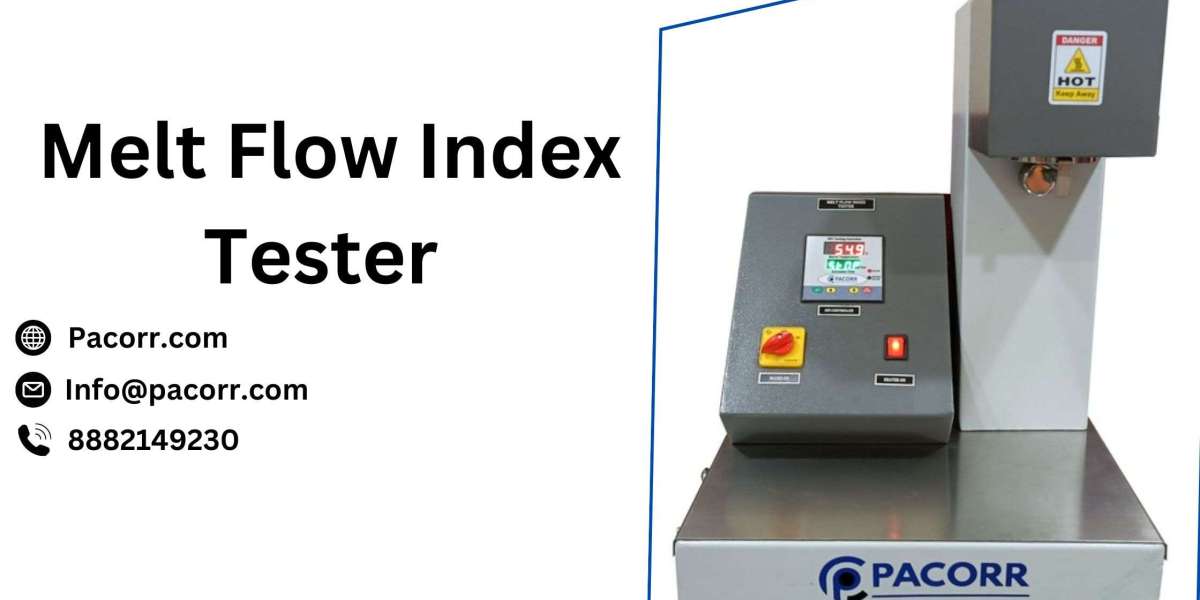Introduction
In the plastic manufacturing industry, understanding the flow characteristics of polymers is crucial for ensuring product quality and performance. The Melt Flow Index Tester is a vital tool that measures the rate at which a thermoplastic polymer melts and flows under specified conditions of temperature and pressure. This comprehensive guide explores the importance of the Melt Flow Index Tester, its working principle, applications, and how to interpret its results.
What is a Melt Flow Index Tester?
A Melt Flow Index Tester is a laboratory instrument used to determine the melt flow rate (MFR) of thermoplastic polymers. The MFR, expressed in grams per 10 minutes, measures the ease of flow of the molten polymer. This value is essential for understanding the polymer's viscosity, which is critical for processing and quality control.
Working Principle
The Melt Flow Index Testing operates by heating a sample of the polymer to a specified temperature, typically between 190°C and 230°C, depending on the polymer type. The molten polymer is then extruded through a die of specific dimensions under a defined load. The amount of polymer extruded over a set period is measured and recorded as the melt flow rate.
Key Components of a Melt Flow Index Tester
- Heated Barrel: Melts the polymer sample to the required temperature.
- Piston and Load: Applies a specified load to push the molten polymer through the die.
- Die: A capillary die with specific dimensions through which the molten polymer flows.
- Timer: Measures the duration of the test.
- Balance: Weighs the extruded polymer to calculate the melt flow rate.
Importance of Melt Flow Index Testing
- Quality Control: Ensures that the polymer has the desired flow characteristics, essential for consistent processing and product quality.
- Material Selection: Helps manufacturers choose the appropriate polymer grade for specific applications based on the MFI value.
- Process Optimization: Assists in optimizing processing parameters such as temperature, pressure, and cooling rates.
- Regulatory Compliance: Many industries require MFI testing to comply with national and international standards.
Applications of Melt Flow Index Testing
- Injection Molding: Ensures the polymer Melt Flow Index Tester Price properly into the mold to form complex shapes without defects.
- Extrusion: Helps control the consistency and quality of extruded products such as pipes, sheets, and films.
- Blow Molding: Determines the suitability of polymers for forming hollow parts like bottles and containers.
- Quality Assurance in Recycling: Assesses the degradation and flow properties of recycled polymers to ensure they meet the required specifications.
Interpreting Melt Flow Index Results
The MFI value is inversely proportional to the viscosity of the polymer. A higher MFI indicates lower viscosity and easier flow, while a lower Melt Flow Teste indicates higher viscosity and more resistance to flow. Here are some general guidelines for interpreting MFI results:
- High MFI (above 20 g/10 min): Suitable for processes requiring low viscosity, such as injection molding of thin-walled parts.
- Medium MFI (5-20 g/10 min): Ideal for general-purpose injection molding and extrusion.
- Low MFI (below 5 g/10 min): Suitable for applications requiring high strength and rigidity, such as structural components.
Conclusion
The Melt Flow Index Tester is an indispensable tool in the plastic manufacturing industry. It provides critical information about the flow properties of polymers, essential for ensuring product quality, optimizing manufacturing processes, and selecting suitable materials for specific applications. By understanding and utilizing MFI testing, manufacturers can achieve better control over their production processes and produce high-quality plastic products.








